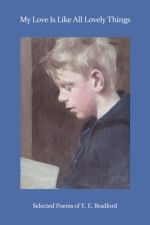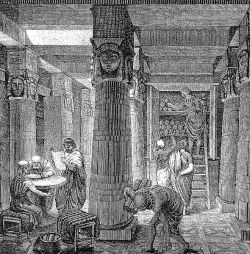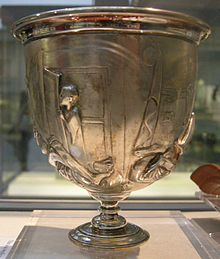Main Page: Difference between revisions
No edit summary |
No edit summary |
||
| Line 48: | Line 48: | ||
| style="color:#000; padding:2px;" | <div id="mp-tfp"> [[Image:Warren Cup modenature 20thCentury london British Museum.jpg|300px |left]] | | style="color:#000; padding:2px;" | <div id="mp-tfp"> [[Image:Warren Cup modenature 20thCentury london British Museum.jpg|300px |left]] | ||
'''The Warren Cup'''. – Roman Empire, ca 1st century. – Silver ; 11 × 11 cm. – (London, United Kingdom : British Museum, Room 70 ; 1999,0426.1). | |||
The [[Warren Cup]] is an ancient Roman silver drinking cup decorated in relief with two images of male same-sex acts. The cup is named after its first modern owner, the collector and writer Edward Perry Warren, and was acquired by the British Museum in 1999. It is usually dated to the time of the Julio-Claudian dynasty (1st century AD). | The [[Warren Cup]] is an ancient Roman silver drinking cup decorated in relief with two images of male same-sex acts. The cup is named after its first modern owner, the collector and writer Edward Perry Warren, and was acquired by the British Museum in 1999. It is usually dated to the time of the Julio-Claudian dynasty (1st century AD). | ||
"Images like this were not unusual in the Roman world. Some of the boys on this cup are underage by today's standards, but the Romans tolerated relationships between older and younger men. Relationships between men were part of Greek and Roman culture, from slaves to emperors, most famously the emperor Hadrian and his Greek lover, Antinous. Today such ancient images remind us that the way societies view sexuality is never fixed." [http://www.bbc.co.uk/ahistoryoftheworld/objects/D6XhBBXCTPy-tLxOUvy-FQ] | |||
Revision as of 12:15, 30 January 2013

|
|
|













